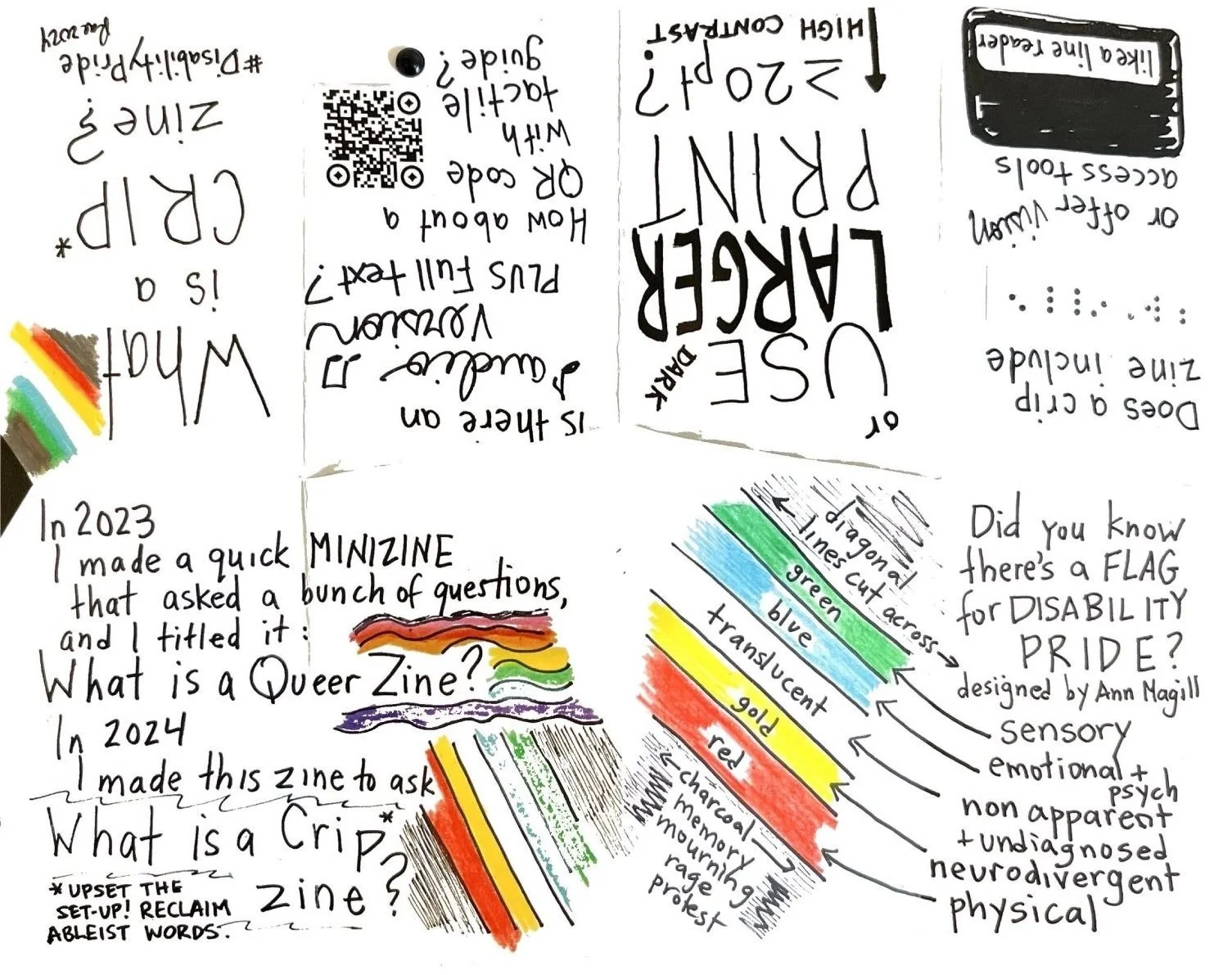What is a Crip Zine?
I made this double-sided tiny comic for Disability Pride Month July 2024. With tactile as well as visual surprises, bonus material on the interior, and featuring Principles of Disability Justice and the Disability Pride flag, the zine unfolds from a single sheet and asks, “What is a crip zine?” Listen to the audio on this page. Link to full text of the audio here.

